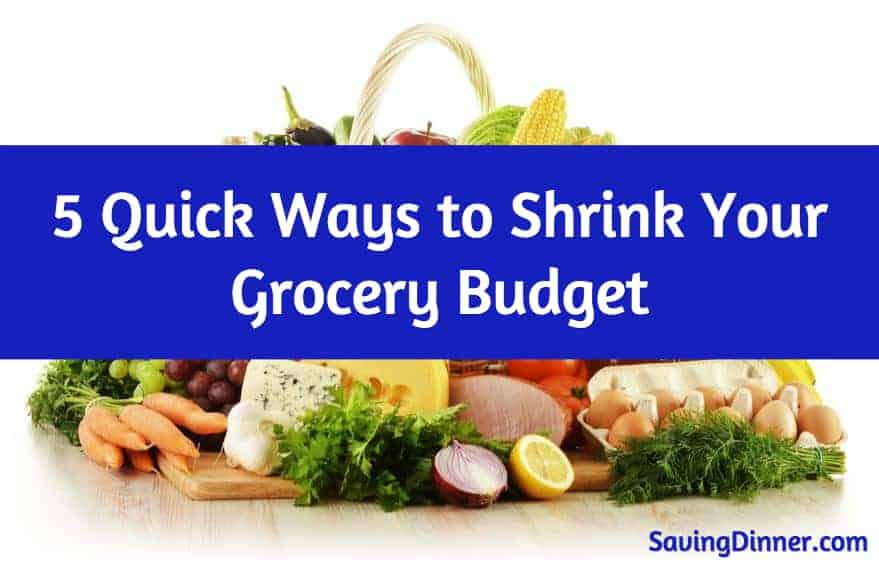Navigating the grocery store in this day and age feels like tiptoeing around a minefield. With everything we’re hearing about GMOs, hormones, and chemicals in our foods, it makes you wonder if it’s safe to eat anything anymore.
In a perfect world, we would all be able to buy everything fair trade, organic, and grass-fed, but in reality, even if you live in a place where the best of the best is available to you, it’s simply not feasible for the average person to be able to afford the “perfect” diet.
Luckily, there is a trick to prioritizing your grocery dollars so that you can stretch your budget to cover the items that are worth spending more on while saving on some other areas.
The first thing you need to do here is to change your mindset. When you stop buying chemical-laden processed foods, you’re saving money on all those boxes of nutritionally inferior items. When you spend money on organic items, you’re less likely to waste food, so you won’t be throwing as much in the trash. It might feel like you’re spending more on a whole food diet, but that’s not necessarily the case.

Where to spend your money at the grocery store
Organic meat and dairy. If your grocery budget is very tight, invest in organic dairy and meat over organic produce and grains. Conventionally raised animal products have been shown to contain the highest concentrations of pesticides and hormones. With your milk, cheese, and dairy, try to buy full-fat organic because full-fat is better for you. With meat and poultry, look for organic first, grass-fed and pasture-raised second.
Shop based on the Dirty Dozen and the Clean Fifteen. Some foods tend to be heavily contaminated with pesticides. These foods are logged each year by the Environmental Working Group’s Dirty Dozen list. This list serves as a great way to determine which foods are most important to buy organic. The Clean Fifteen list shows us which foods are relatively low in pesticide residue. Shop according to those lists and you’ll save lots of money on organic produce. For instance, rather than forking over the cash for expensive organic potatoes, go for the conventionally grown sweet potatoes which are on the Clean list!
Hit the farmers’ market first. Organic is great but local, in-season organic is the absolute best you can do. Get whatever items you can from the farmer’s market and then get the rest at the grocery store later.
Shop from the freezer. Some stores carry bulk organic produce in the freezer section. See how economically you can buy your organic veggies and if it works out better for your budget, go ahead and stock up with frozen. Frozen organic will be better for you than pesticide-ridden fresh!
Transition gradually. It’s not necessary to go nuts replacing all of your condiments and spices with organic varieties all at once. As an item like cinnamon or peppercorns runs out, replace it with an organic version. For condiments, consider making your own from organic ingredients, especially if your children eat copious amounts of them. Ketchup, for instance, is generally chock full of high fructose corn syrup, chemicals, and lots of additives. If your children eat everything dipped in ketchup, I would start making it from scratch or at least buy an organic variety.
Oh, and one more note! When it comes to honey, purchase local, not necessarily organic. It’s very difficult to control where bees pollinate, so organic honey isn’t entirely possible. Buy local, though, and you’ll be good to go.
Another great way to shrink your grocery budget is to PLAN your meals! Subscribe to Dinner Answers today and receive a weekly email containing a complete dinner menu!
0 Responses
I search out organic first routinely, like you’ve said I sometimes need to pick and choose. Have begun to always look for Non GMO Verified foods and will pick them over any other product period.
Very helpful. Actually, extremely helpful. Thanks
Thanks for the guidance. This has always been a struggle to know how to balance to get the best food / health for the money spent. I appreciate the constant encouragement to stay focused on health goals. While it has become a lifestyle for us, we are still not as ‘pure’ as I want our family to be.
Leanne’s nutrition/food articles are always excellent!
Our PNW area just added a ‘national’ natural foods store which most people are flocking to, because of lower prices, than the original natural foods store in our area.
However… I found out that most of the new store’s organic product is shipped in from long distances, not local at all!
So, even though the prices are a little higher, I am sticking to shopping at our original natural foods store. They purchase ALL of their organic products from our local farming/growing/ranching sources. Also the smaller store is locally owned and operated! Now THAT’s local!:)
Local foods don’t have to be picked ‘unripe’ to get to the customer ripe and jam packed full of that delicious fresh-from-the-garden/farm/range flavor. YUM!
Great Advice Leanne! As a Holistic Nutritionist I tell my clients wanting to transition the exact same thing in the same order =) I personally went local/non GMO/Organic about 10+ years ago. I am fortunate enough to have access to local beef/fresh wild Salmon/chickens and great local gardens and farm co-ops. I order food in bulk and save quite a bit that way. There are ways to cut the cost. You just have to plug in!
This may sound terrible but how do you know if it is really organic even if the label says so? And if it says organic does that also mean NON GMO and vice versa?